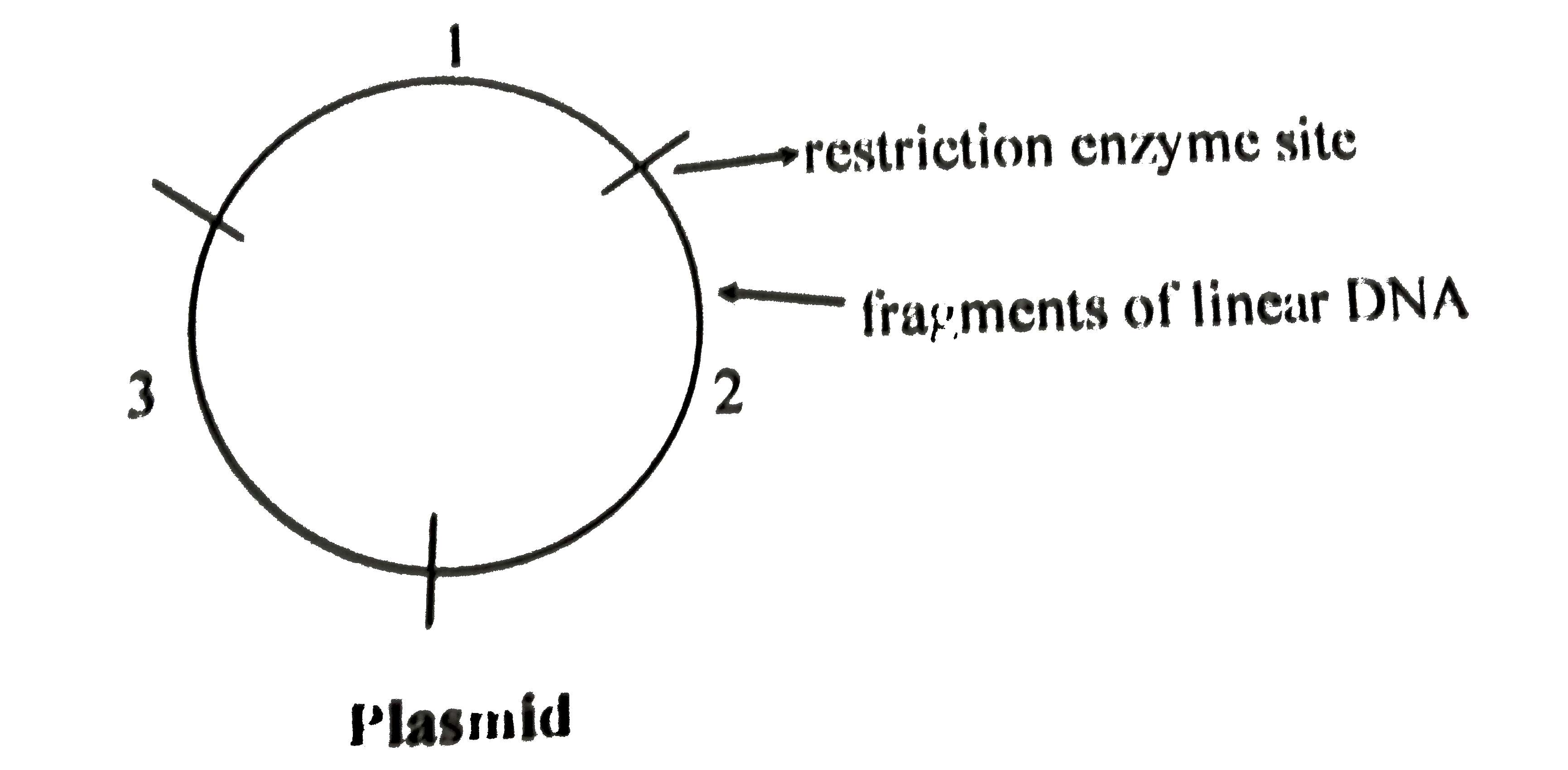How many linear DNA fragments will be produced when a circular plasmid is digested with a restriction enzyme having 3 sites?
4
5
3
2
The correct Answer is:C
Topper's Solved these Questions
- KVPYBOOK - KVPY PREVIOUS YEARCHAPTER - KVPYEXERCISE - PART-II MATHEMATICS
1 Video
- KVPYBOOK - KVPY PREVIOUS YEARCHAPTER - KVPYEXERCISE - PART II BIOLOGY
10 Videos
- KVPYBOOK - KVPY PREVIOUS YEARCHAPTER - KVPYEXERCISE - PART-2 (BIOLOGY)
10 Videos
- KVPY 2021BOOK - KVPY PREVIOUS YEARCHAPTER - KVPY 2021EXERCISE - PART I BIOLOGY
19 Videos
Similar Questions
How many fragments will be generated if you digest a linear DNA molecule with a restriction enzyme having four recognition sites on the DNA?
(a) 3
(b) 6
(c) 5
(d) 4
View SolutionHow many fragments will be generated if you digest a linear DNA molecule with a restriction enzyme having three recognition sites?
View Solution
Knowledge Check
How many fragments will be generated on the digestion of a closed circular DNA molecule with a restriction enzyme having six recongnition sites on the DNA ?
A5B7C6D9How many fragments will be generated on the digestion of a closed circular DNA molecule with a restriction enzyme having six recongnition sites on the DNA ?
A5B7C6D9How many fragments will be generated if you digest a linear DNA molecule with a restriction enzyme having four recongnition sites on the DNA?
A3B6C5D4
Summarise the events in sequence when a mixture of plasmid vector and human DNA is digested with restriction enzyme EcoRI is supplemented with enzyme DNA ligase.
View Solution
study the linking of DNA fragments shown above.
(i) Name ‘a’ DNA and ‘1” DNA.
(ii) Name the restriction enzyme that recognises this Palindrome,
(iii) Name the enzyme that can link these two DNA fragments.
View Solution
study the linking of DNA fragments shown above.
(i) Name ‘a’ DNA and ‘1” DNA.
(ii) Name the restriction enzyme that recognises this Palindrome,
(iii) Name the enzyme that can link these two DNA fragments.
View SolutionDNA fragments cut by restriction enzyme can be separated by
View SolutionA piece of foreign DNA was inserted into a plasmid with an antibiotic resistance gene and lactose Z gene. The plasmid DNA was cut with a restriction enzyme, which splits the lactose Z gene and opens the circle. The foreign DNA was next inserted into the open restriction site of the plasmid. When the recombinant plasmid was introduced into bacterial cells and grown in the presence of antibiotic, some of the colonies turned blue in the presence of gene. The blue colonies contained
View Solution

